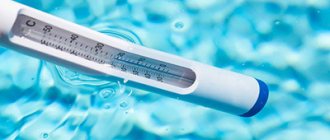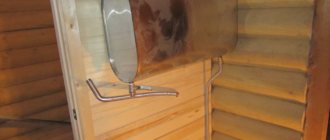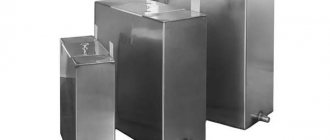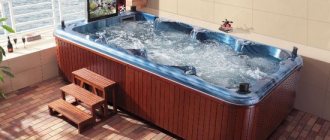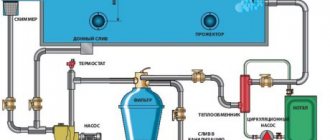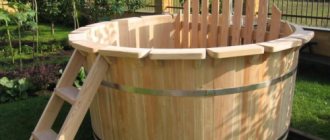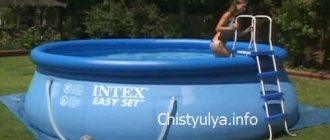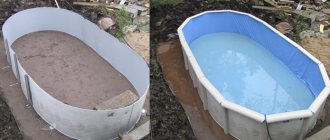- home
- Articles
- Pool water purification methods
If you have a swimming pool at your dacha, then in the hot summer you will be saved from the heat, you will be able to relax by the water with the whole family, and at the same time you will be confident in the quality and safety of the water in which you swim.
To ensure that your artificial pond brings only health benefits and does not develop pathogenic bacteria, it is worth cleaning it regularly using special preparations. If the water has lost its transparency, an unpleasant odor has appeared, it has become dirty and oily - act. We will tell you how to clean your pool from algae, bacteria and debris and return it to perfect condition.
Why do you need to clean?
Cleaning is required for more than just maintaining the tank's appearance. With it, you will avoid many problems, such as the proliferation of microorganisms and bacteria. There are several cleaning methods. Let's look at them in more detail.
To clean a swimming pool installed in a private house or on a summer cottage, there are various methods: mechanical, chemical and electrophysical. The electrophysical cleaning method is not suitable for small pools, because it is a rather expensive method and requires the purchase and installation of specialized equipment.
Mechanical cleaning
The mechanical cleaning method is suitable if you need to remove debris from the pool, for example, branches, leaves or insects that have fallen into the water. Of course, after using this method, it will be advisable to purify the water from microbes using chemistry. Cleaning devices include:
- Brushes that can be used to remove debris;
- Nets are convenient for catching foam from flowering and small debris;
- A vacuum cleaner will help remove mucus and dirt from the walls.
Mechanical cleaning method
The easiest way of mechanical cleaning (physical) is to use nets or special vacuum cleaners to catch all foreign objects. It is clear that a cleaning net is different from a butterfly net. In our case, we use special nets for effective cleaning of pools, which have a bag for collecting debris, as well as an attached magnet to which small metal objects are attracted: coins, keys, keychains, etc.
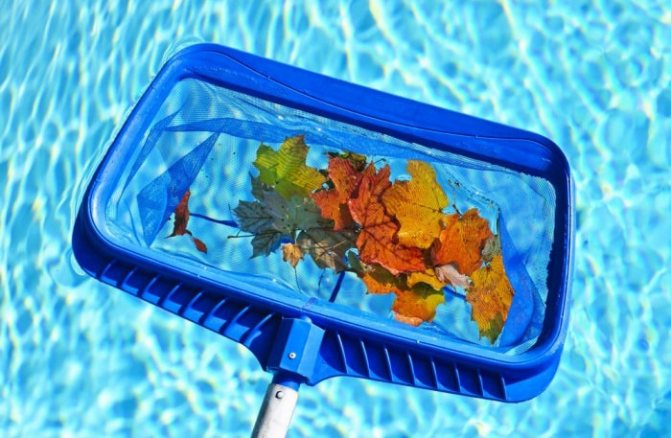
However, a net cannot clean the walls of the pool, on which dirt accumulates, which is a breeding ground for fungi and mold. To combat these deposits, a handheld pool vacuum cleaner is used, which glides easily over the surface using rollers, is light in weight and runs on a battery.
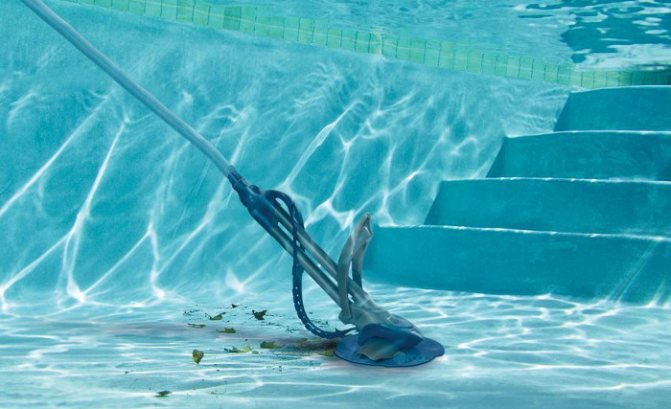
After the pool has been cleaned with a net and a vacuum cleaner, the water needs to be refreshed by passing it through special filters, of which there are three types:
- Sand.
- Cartridge.
- Diatoms.
The sand filter is the cheapest, and therefore, naturally, ineffective, since only large particles of pollution settle in it, and small ones remain in the reservoir.
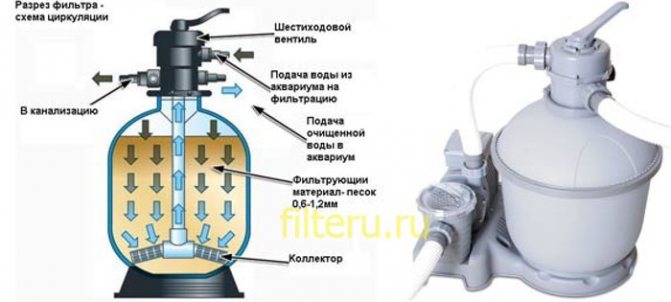
In addition, this type of filter requires constant daily cleaning. All these disadvantages make it of little demand, except perhaps for filtering small-volume inflatable pools.
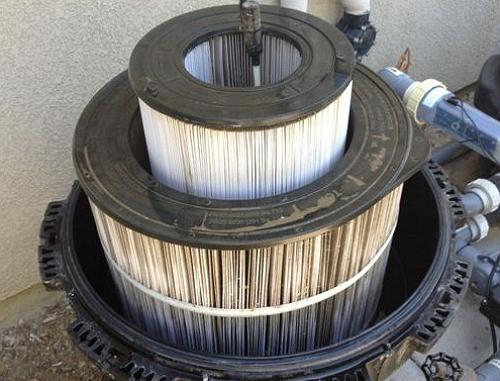
The cartridge analog purifies water better due to several elements located inside the body. The cartridges can be washed, but it would be better if they were replaced completely.
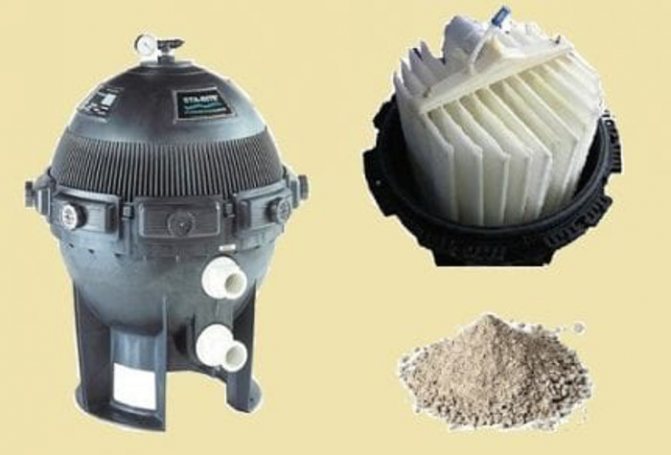
Diatom filters are expensive, but they purify water efficiently. They contain crushed plankton shells called “diatomaceous earth” as a filter element. Although this type of filter cleans the pool very efficiently, it is expensive to maintain: the filter quickly becomes clogged and requires constant washing or replacement.
Dry cleaning
This method can be used at the end of the swimming season, shortly before the onset of cold weather. The method involves using special chemistry. They come in different types depending on their purpose:
- Chlorine-containing. They give a quick effect. At the same time they are not expensive. They are used if the water has begun to bloom and a green tint has appeared. Of course, when using this method, the smell of chlorine cannot be avoided. Keep in mind that chlorine compounds for disinfection are very active; do not use this method if you are susceptible to allergic reactions.
- Bromine-containing. This substance does not have a pungent odor, does not provoke allergies, but at the same time it also perfectly cleanses algae and blooms.
- Hydrogen peroxide (30%) or in common parlance “perhydrol” - this method will get rid of persistent plaque and cloudiness.
- Coagulants, as well as flocculants, will remove debris and grease. Prevents the development of algae and bacteria. Method of exposure: when entering the water, they envelop dirt and fall into sediment to the bottom, which can be cleaned with a vacuum cleaner.
- Cleaning method: salt + copper sulfate. Also promotes disinfection. A 100 liter pool requires 1 gram. salt and 3 gr. vitriol.
If cleaning is carried out regularly, you will soon forget that the water in the pool may be of poor quality and not suitable for swimming.
Chemical cleaning method
The chemical method of purifying water in the pool is no less important than the physical one, as it allows you to maintain the chemical properties of water that are safe for the human body. Basically chemical cleaning involves three processes:
- pH level support.
- Disinfection.
- Fighting algae.
pH support
The pH level is a very important and fundamental factor on which all further cleaning of the reservoir with the help of chemicals depends. pH is a hydrogen indicator that expresses a measure of the activity of hydrogen ions in water, affecting its acidity or alkalinity.
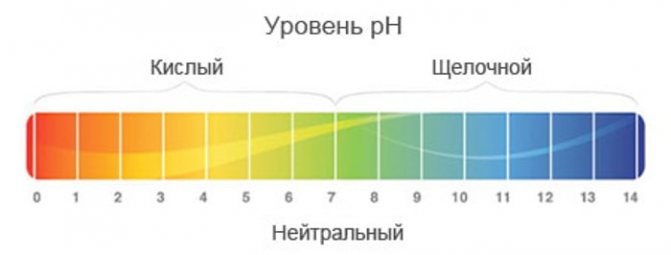
It is considered normal if the pH value is 7.2–7.6. If this value exceeds 7.6, then the water is too alkaline, which negatively affects the condition of the skin and mucous membranes of the nose and throat. If the pH value is less than 7.2, this indicates an increased acidity of the environment in the pool, which leads to the destruction of various parts of the pool: walls, metal, tiles, etc.
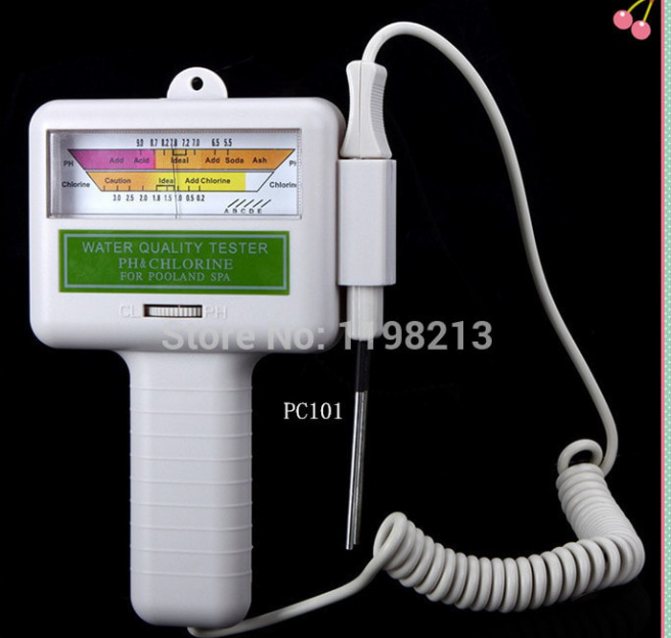
The pH level is determined using a special tester, and AguaDoctor pH is used to maintain the proper value. The drug is poured around the perimeter of the pool until completely dissolved in a proportion of 500 g per five liters of water.
Disinfection
At a normal pH level, disinfection (destruction of microbes) is carried out with preparations based on chlorine, active oxygen and bromine.
Chlorination of water, subject to normal standards, is the simplest and most effective way to purify water from contamination.
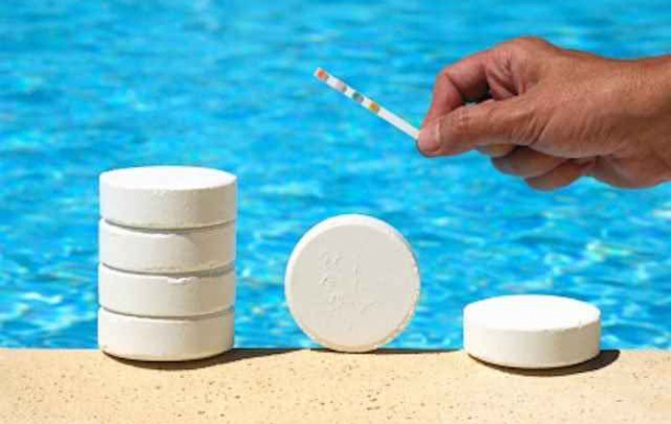
As an example, AguaDoctor C60, which is available in granules or tablets, can be used for disinfection. Important: before using the drug, read the instructions for its use, which are indicated on the container (bucket).
A more modern cleaning method is disinfection using active oxygen. The good thing about this method is that when used, there is no smell of chlorine and no harmful effects on human skin.
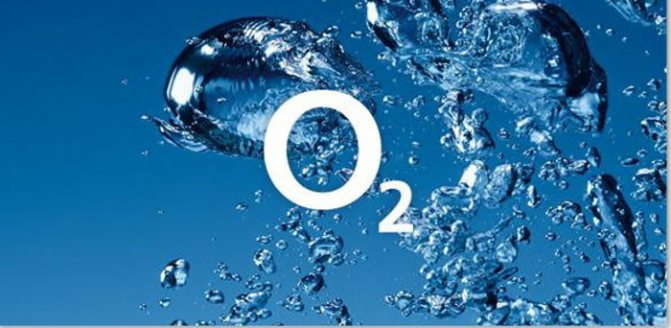
One of the preparations for cleaning in this way is AguaDoctor 02, the granules of which contain active oxygen. This drug does not react with organic nitrogen, does not form foam in the corners of the pool (unlike chlorine) and is a powerful oxidizing agent.
Bromine-based disinfectants are an intermediate link in their action between chlorine and active oxygen.
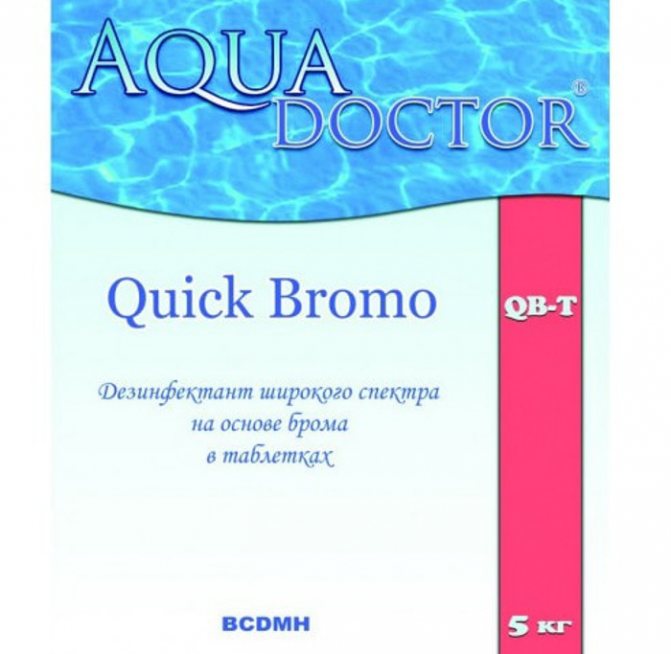
You can use AguaDoctor QB-T, commercially available in tablet form. Dissolves in water without residue and does not lead to filter contamination.
Algae control
Algae in a pool are not lush plants, but plant organisms that cover the surface of the walls, causing them to become slimy and unpleasant to the touch. And even if you change the water, the problem will not be solved.
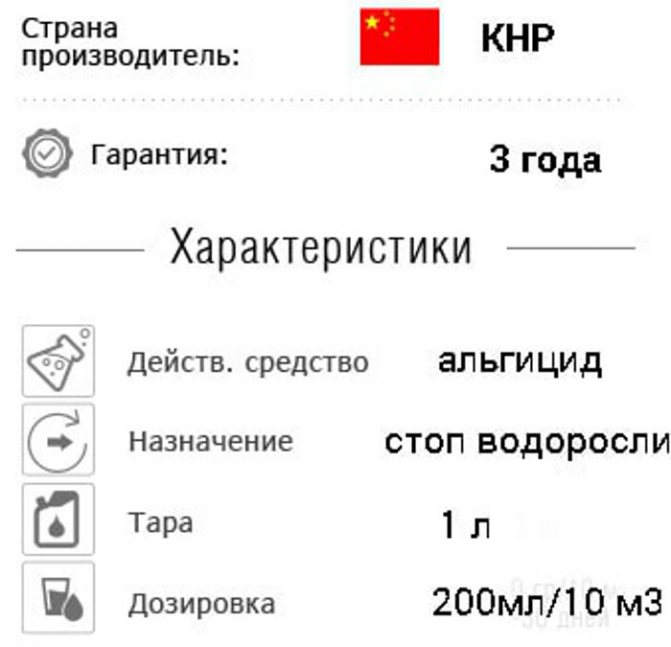
And here chlorination will not help, but the use of alcehyde (alcohol devoid of oxygen), which penetrates through a dense curtain of algae, can have the desired effect. And again the drug AguaDoctor AC comes to the rescue, but in a liquid state. How to use? Indicated on the packaging.
Electrophysical cleaning methods
If you have a large artificial pond, live in a warm climate and use it most of the year, then you should take care of a thorough disinfection method - a pool cleaning system. Flow-through disinfectors are installed in the bowl, including:
- Ultraviolet filtration systems.
- Ozonizers.
- Automatic chlorinators.
- Chlorine-free purification plants.
Let's look at each of the methods in more detail.
Ultraviolet filtration - consists of connecting a chamber to the pool through which liquid enters the pool. The chamber has a built-in special UV lamp that instantly kills all pathogenic bacteria. This cleaning method is completely safe for humans and can be used if children like to play in the pool.
The ozonator operates on the basis of other physical laws. The device delivers ozone molecules into the water, which subsequently break down into the elements that make up diatomic oxygen. Thus, the ozonizer:
- Cleanses away impurities;
- Eliminates odors;
- Makes water clear;
- Destroys bacteria.
Such installations are highly efficient, due to this they are used even in modern industrial water treatment.
Chlorine-free purification systems can turn untreated water into drinking water.
The chlorinator is also in demand among pool owners. During operation, this device creates a special environment using electrolysis. Bacteria cannot grow in it. The essence of the electrolysis process:
- Using an electrode, the salt is converted into chlorine gas.
- When chlorine encounters a pathogenic environment, the substance is converted back into salt.

Thus, disinfection occurs, while problems such as with the direct addition of chlorine are avoided.
Types of filters
In order not to constantly have to resort to water purification, it is possible to install special filter elements in the pool. They will help to avoid small debris and suspensions that spoil the color. They come in sand and cartridge types.
Sand type
Such a filter is filled, accordingly, with sand. It not only perfectly purifies water, but also copes with a large amount of iron in it. Inexpensive, but the only drawback is that it needs to be cleaned periodically using high pressure. At dachas it is often not possible to properly clean the filter. Ideal for inflatable pools where the contents need to be replaced frequently.
Cartridge type
The filter element is a cartridge consisting of a special filter material. Such a filter costs more, but its efficiency is much higher than that of a sand filter. As a rule, it is installed on frame artificial reservoirs. The cartridge must be replaced periodically, which is not so cheap.
Pool cleaning and disinfection
After buying a pool and filling it with water, you will definitely have a question - how should you care for it, and how often will the water need to be changed? After all, draining several tons of water and then refilling it again is a significant waste of time and effort, and you definitely don’t want to do it often. In order to change the water no more than once a month, and with proper care - even less often, you will need to maintain its cleanliness, and also ensure that it does not bloom or acquire an unpleasant color or smell. It's actually not difficult at all.
When maintaining water purity, it is important to understand the difference between mechanical cleaning and disinfection, and which products and devices are suitable for your pool, taking into account its size and other features. Let's consider these points in more detail.
The more often you use the pool, the faster sand, dirt and other small debris from your summer cottage get into the water, and if you don’t remove it, sooner or later the water will become cloudy and swimming in it will no longer be so pleasant. But if debris floating on the surface is easy to remove with a net or even manually, then how to deal with suspended matter in the water column or at its bottom?
- The first and most necessary accessory for water purification is a filter pump
. This installation is connected to Intex pools, equipped with holes for two hoses - one hose takes dirty water from the bowl and delivers it to the filter, where it is cleaned of suspended matter and supplied back using the second hose. Such filter units come in different sizes and types - relatively simple ones, with a replaceable paper cartridge as a filter element, and more complex sand filters, which are recommended for large pools (more than 4 meters in diameter). Pumps provide not only cleaning, but also circulation of water, which prevents it from stagnating. It is recommended to turn them on at night, the average operating time is about six hours, but this is always individual and depends on how often you use the pool, whether you cover it with an awning, and so on - you will quickly learn to assess the frequency and duration of water filtration that you need. . - Automatic
and
manual
pool vacuum cleaners are incredibly convenient devices that will help you clean the bottom and walls of the bowl when the water suction power of the filter pump is not sufficient to pull in all the debris that has settled down. An automatic vacuum cleaner is connected from inside the pool to a hole to which a filter pump is connected from the outside, and only works when the pump is turned on - thanks to the flow of water, it pushes off from the bottom and randomly moves along it in different directions, sucking in debris and sand - you don’t even need to need to take part in this process. But a handheld vacuum cleaner is convenient because it runs on batteries and does not require any additional devices - with its help you can clean not only the bottom, but also the walls, on which plaque can accumulate over time. - Nozzles and sets for cleaning the pool
- these are various nets and brushes that are attached to telescopic long handles - the simplest and at the same time necessary accessories for quickly cleaning the pool. Using a net, you can collect debris floating on the surface of the water, and using a straight or curved brush will be convenient for washing the walls or bottom. It is most convenient to use brushes while the filter pump is operating - then the debris that you will clean from the pool bowl will rise into the water and quickly enter the filter unit. And such brushes will definitely come in handy for thoroughly cleaning the pool at the end of the season, when you drain the water from it and are going to wash the bowl before putting it away for winter storage. - A skimmer
is a simple device for collecting floating debris from the surface of the water. It looks like a small bucket floating next to the wall of the pool and connected from the inside to the hose of the filter pump that takes in water - thus dirt is sucked in not from the depths of the bowl, but from the upper edge of the water, and all the leaves, insects and other floating on it large debris settles in a bucket, and fine dust goes into the filter pump. You can connect this device if necessary, and when the surface of the water is cleared, the contents of the bucket must be thrown away.
We looked at the basic accessories for water purification - it would seem that nothing else is required to ensure that it remains clear for a long time. But this is not entirely true, because it is very important to know that all devices for water purification are designed only to remove debris, dust and other mechanical impurities, but they do not in any way affect its chemical composition and do not fight harmful microorganisms. In other words, all filters, vacuum cleaners and other devices purify water, but do not disinfect it.
– that is, they do not prevent water from blooming and the formation of bacteria in it. Therefore, in parallel with cleaning, you also need to use disinfection, and below we will look in detail at how you can achieve perfectly clean and safe water.
- A chlorine generator
is the most advanced and fully automatic device, for which you will need ordinary table salt. It needs to be poured directly into the water, and a chlorine generator connected to the standard hoses, when salt water passes through it, will ensure its softening and disinfection, breaking down the amount of chlorine required for your pool from the salt. In this case, the water circulation is carried out by a filter pump - you can purchase it separately, or you can buy a one-piece installation, which consists of a cleaning pump and a chlorine generator at the same time. Our store presents different options for such devices, both for small and large pools. In fact, such a combined installation is the most successful option for water care, since it simultaneously performs filtration and disinfection - this is especially convenient for large pools, as well as for those that are used for a long time and intensively, if their owners do not want to spend a lot time for service. Just add salt to the water, turn on the filter and chlorine generator overnight - and you can forget about all the problems associated with water purity! - As an alternative to expensive disinfection units, you can use conventional disinfectants - chlorine tablets and liquids, or chlorine-free substances. They dissolve in water in the proportions specified in the instructions and fight the development of bacteria and algae. This is especially convenient for small pools or when they are used for a short time (for example, if you come to the country for a week and you need clean water until the end of your vacation, and not for the whole season). Our store offers Dezavid Bass
- a universal disinfectant liquid that does not contain chlorine and is completely safe for children when used in small concentrations, and it is also quite economical, so that for an average pool one bottle will last for the whole season. Desavid prevents the water from blooming, so it will not turn green or brown, and you can be sure that the composition of the water in your pool is ideal even for bathing small children, because their safety is very important for every parent.
We should conclude that cleaning and disinfection are different things
, and each of them cannot be used in isolation from the second, otherwise you will still have to frequently change the water in the pool, wasting time and effort. If you are not sure which of the above is really what you need, we recommend purchasing a filter pump that matches the recommendations for your volume of water, and one disinfectant - this can be called a starter kit for starting a pool, the water in which will last a long time and remain of high quality . When you first start the pool, it is recommended to immediately add disinfectant liquid to it to prevent the growth of bacteria, and you can turn on the filter pump overnight (usually the optimal operating time is about 6 hours). With further use of the pool, you will definitely gain experience in caring for it and understand all the subtleties, of which there are actually not so many. And if you have any questions, just call us and we will be happy to answer them and help you with your choice!
We also advise you to read:
How to choose a vacuum cleaner for cleaning a pool.
Pool chemicals: what to choose.
Automatic vacuum cleaner: personal experience of use.
General care recommendations
Keeping the tank clean takes some effort. If you do not want to clean the pool often, then it is worth purchasing a special awning that will prevent debris, leaves, branches and dust from entering. Remember that it is better and cheaper to periodically clean your pool than to constantly change its water. For this:
- Install filters.
- Every other day, catch the garbage using a net.
- Use chemicals once every three weeks.
- Unfold the awning at night or in bad weather.
- For the winter, the pool should be thoroughly cleaned and preserved until the next swimming season.
- When using an inflatable model, the water is changed once a week.
